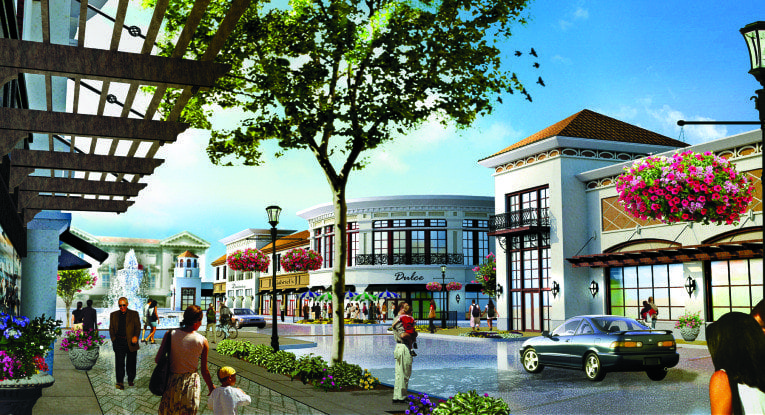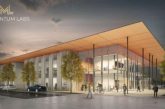
By Caitlyn Finnegan
It was a long night of discussions to make headway on what Butler Enterprises calls the “gateway” and “crown jewel” of its proposed 267-acre development that will spread from the I-75 Archer Road exit to Southwest 34th Street. Debates over future block sizes and street ways continued for six hours Wednesday night, drawing plenty of input from both supporters and opposition to the redevelopment of Butler Plaza.
City commissioners voted 6-1, with Commissioner Thomas Hawkins dissenting, to approve a collection of changes for the planned mixed-use development presented to the board and approved by city staff.
Among the changes was the distinction of four “sub-areas” of development: a “big-box” retail area where a new Walmart and other destination retailers will be located, an urban village that will serve as a transition between outlying properties and the town center, a pedestrian-friendly Town Center, as well as a redevelopment area reserved for future development. There was also a shift of the planned town center from the north side of the property to bring it closer to the intersection of Archer Road and Southwest 34th Street.
“We want to stop retail leakage,” said Butler Enterprises representative Gerry Dedenbach. “Those dollars that are being driven to Jacksonville or Orlando or Miami — they can end up right here.”
Representatives for Butler Enterprises made it clear that they were not asking for any changes to the development thresholds set when the commission voted on the expansion in 2012. Developers currently have approval for 2.5 million square feet of retail space, 250,000 square feet of office space, 500 hotel or motel rooms and up to 1,000 apartments or condominiums.
When completed, the project will have the potential to create more than 3,300 jobs and $96 million in annual wages. The total economic impact of the development stands at an estimated $389 million after considering the plaza’s infrastructure and real estate values.
The developers will not pursue everything they have gained approval for, however, due to a traffic cap set by the city. Based on data from traffic studies, the development would cause a jump in traffic three times the current average of 12,224 trips a day, but the cap limits traffic to 37,591 trips per day.
When determining how the different “sub-areas” of the development would be interconnected and how large the block sizes should be able to extend, the use of maneuvering lanes quickly rose to the front of the conversation.
Although commissioners ultimately ended up approving the request to allow the use of lanes instead of streets, along with an increase of the average block perimeter to a maximum of 2,000 feet in most areas, with a cap of 3,200 feet in the destination retailer area, the decision took several hours of debate.
“Why not streets now? It’s way too early,” said Robert Walpole, president of engineering firm Causseaux, Hewett & Walpole Inc. “These will serve as placeholders for the future.”
Walpole argued that putting standard streets into the road grid instead of using maneuvering lanes would increase infrastructure costs by five to six times. “It’s not financially feasible to build them where you are guessing something will be; you will just have to tear them up and redo it when that changes,” Walpole said.
When it came time to vote on approval of the planned development zoning application for the plaza, Braddy discussed a conflict caused by Hawkins appearing at a Plan Board meeting in February to speak against block size changes and the use of maneuvering lanes in place of streets for the development.
Hawkins’ public comments prompted Butler Enterprises’ lawyer David Theriaque to send a letter to the City Attorney’s Office, raising concerns about Hawkins’ ability to remain fair and impartial during the quasi-judicial hearing on its zoning applications. In respect to quasi-judicial meetings, commissioners are supposed to refrain from outside discussions of the application and base their decisions solely on the evidence presented during the public hearing.
Braddy’s decision to show three separate video clips from the Plan Board meeting drew a range of opinions from the board, with Commissioner Todd Chase saying Hawkins’ decision to speak publicly about the application was a legitimate issue and Commissioner Lauren Poe criticizing Braddy’s decision to play the clips.
Hawkins said he was “flabbergasted” that Braddy spent the time going through the five-hour video of the meeting to find the clips. Braddy countered that Hawkins’ actions were a reflection on the entire board of commissioners and should be addressed appropriately.
Among the zoning requirements discussed during the meeting were sidewalk improvements to run from Archer Road to the front of the Trader Joe’s, unique signage standards that will allow the plaza to have centralized signage to point pedestrians in the right direction, as well as a public transit transfer station located near the big-box stores for easy access.




